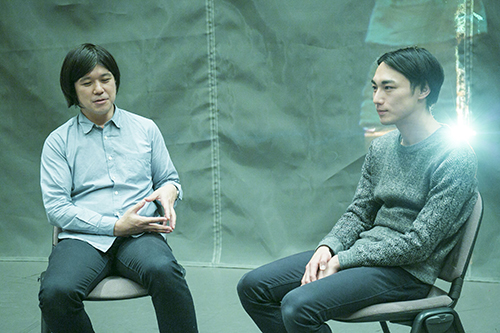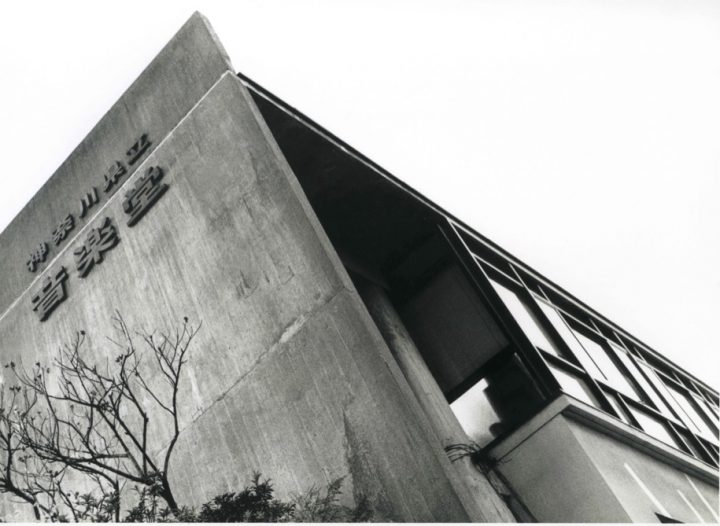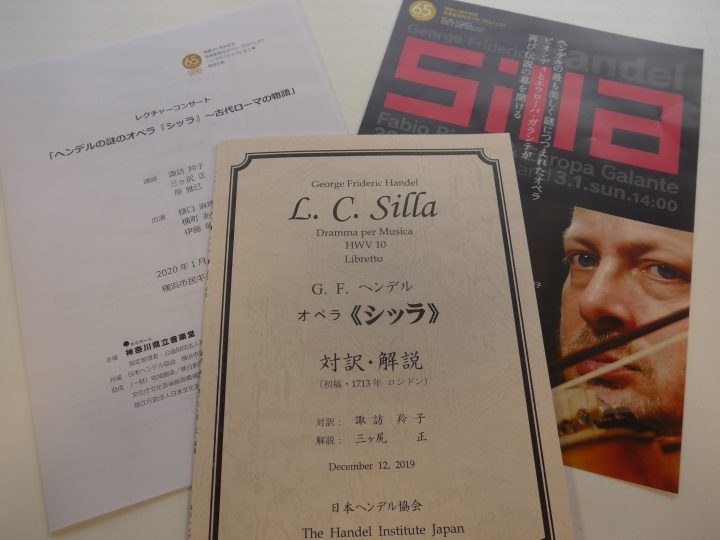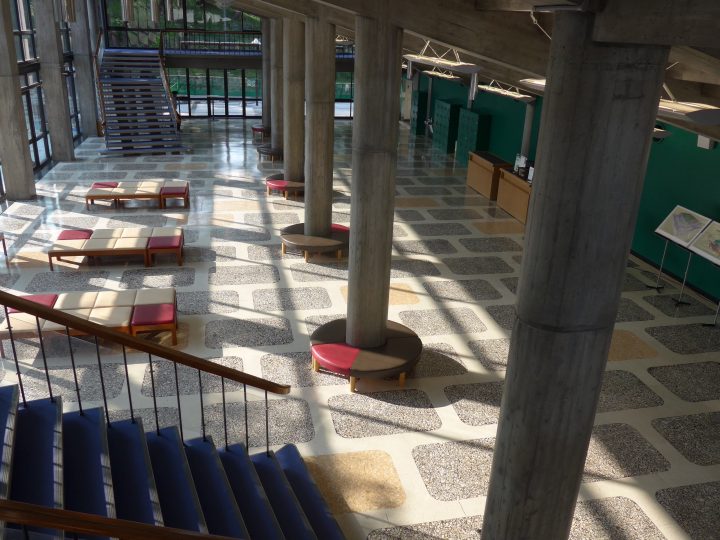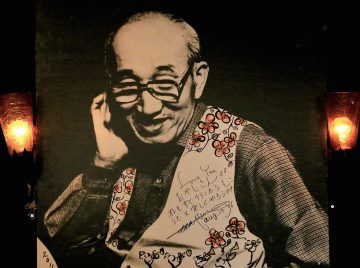Ryota Yagi and Teita Iwabuchi talk about "time travel"
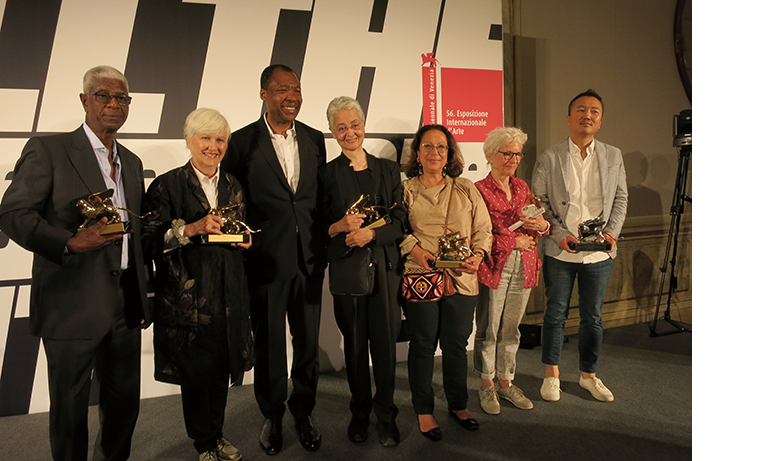
Interview: Takuya Irie (SETENV) Text: Akiko Inoue Photo: Masamasa Nishino
The largest solo exhibition of contemporary artist Yagi Ryota, who creates works using a variety of expressive methods, from sound-based works to objects, video, installations and interactive works, will be held at the Kanagawa Prefectural Hall Gallery. The "Art Complex" series, which began in 2007 at the gallery's special exhibition venue, has realized a number of innovative collaborations by experimentally linking various genres of expression with contemporary art as the axis. This time, a live performance titled "Time Travel" will be held at Yagi Ryota's exhibition "Science/Fiction", by three contemporaries, Yagi Ryota, Iwabuchi Teita and Hasunuma Shuta. Yagi himself, an artist, will operate the video live, and it will be a rare opportunity to intertwine the video, Iwabuchi's physical body and Hasunuma's music.
On a certain day in November, the first day of full-scale rehearsals, we spoke to both Yagi Ryota and Iwabuchi Teita about the production.
The beginning of the project
- First of all, please tell us about the concept and origins of this project.
Yagi: It was me who approached them first.
I have a work called "Lento – Presto," in which the surrounding environment changes accordingly as time is stretched or compressed. This time, I wanted to do a performance with a similar structure.
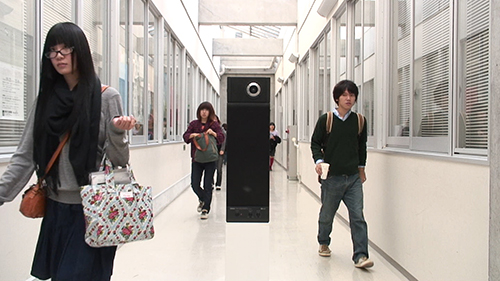
Ryota Yagi《Lento – Presto》 2008
Yagi: For example, if you slow down a sound, the pitch goes down, and if you speed it up, the pitch goes up. In "Lento - Presto," I expressed that in a video work, but when I made that work, I went through the process of shooting → editing the speed → exporting it again. But now that the technology of the equipment has improved and it is possible to edit in real time, I thought that I could do something live by combining that with physical expression, so I asked Iwabuchi. For example, I thought that by using technology to control gravity and time when jumping, it would be possible to do things that could not be done with a living body.
- So it was just the right timing.
Yagi: After we were consulted about the art complex, the direction was decided quite smoothly.
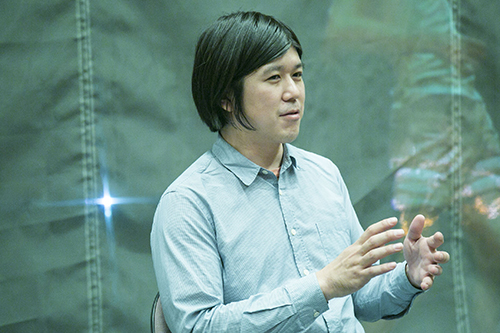
- What did you think, Iwabuchi, when you were approached by Yagi?
Iwabuchi: After I was approached, I visited Yagi's studio in Kyoto and heard his ideas, and I thought I might find some interesting ideas on how the body could respond to that concept. The sense of time can be stretched or shortened using video technology, but the living body basically cannot do that. However, I think there are times when time flows slowly, or conversely, when you feel like "today was a very short day" or "this year went by so quickly." So I think this work will be created by thinking about those everyday sensations, what Yagi expresses in his video, and how my body can relate to it, and how to approach it.
About the collaboration between the three
- Today is the first day of rehearsal together for the two of you, and I imagine you've been exchanging emails and phone calls up until now. What are your thoughts at this stage?
Yagi: When Iwabuchi-san came to my studio and showed me his work on video, I was very impressed by his use of the body and his movements that seemed to stretch time. So I suddenly asked him to do it, and he immediately filmed the first footage on the wood deck in front of the studio. We mostly exchanged data after editing that footage and the footage we shot at the Prefectural Hall Gallery later. Rather than being in close contact, we only exchanged a few e-mails, and then we confirmed each other's concepts, or submitted 200-word statements about our enthusiasm for this performance (published in the November 14, 2014 issue of KANAGAWA ARTS PRESS) , and each of us did our own thing while referring to that. I think it's ideal for two people to consult with each other to create a work, but rather to have their own areas, separate responsibilities, and be able to do professional work, so the balance in this team, including Hasunuma-san, who is in charge of music, is very easy to work with.
From the archives of "conditions" (Composition and choreography: Teita Iwabuchi / Music: Shuta Hasunuma / Cast: Teita Iwabuchi and Kaho Kogure)
Iwabuchi: Collaborative work can sometimes require time to build a solid foundation, but with this project, including the concept, there was a sense that the three of us were working in parallel. Yagi is based in Kyoto, and I work in Tokyo and Yokohama, but the distance between us doesn't bother me at all.
I'm taking on the role of a living human being, so I think it's the softest part of the work. So what I'm struggling with now is how I, as a living being, can interact with the body shown on film, what kind of relationship I can show, and how I can influence and be influenced by what has already been established and recorded.
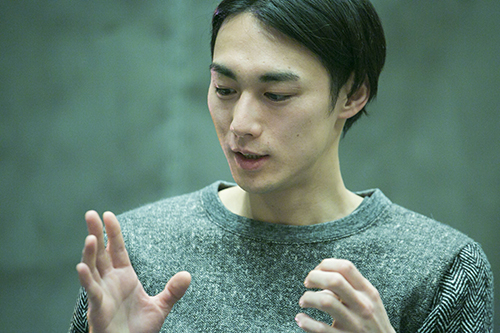
- In rehearsals, you move while thinking about such things. And then Mr. Hasunuma's music comes into play, and you both have experience working with him. With that in mind, please tell us what you think about the music this time.
Yagi: When manipulating time, the image is independent whether it is stopped or moving, and I think the impression it gives doesn't change much, but when the sound stops, it becomes silent, and the impression changes considerably, getting higher or lower depending on the speed of time. In that sense, the presence of "sound" is an essential element in this work. When it comes to composing it, I have no choice but to ask Hasunuma-san. Hasunuma-san is flexible even if I ask him to do something unreasonable, and sometimes he takes an unreasonable adventure, so in that sense I can trust him. I can't predict it yet, but I'm thinking of playing the music that Hasunuma-san created or the sounds he proposed on site, mixing and shortening them. So I'm really looking forward to seeing how much will come out of it as an expression of sound.
- Mr. Iwabuchi, you were just commissioned by Mr. Hasunuma to compose music for the performance piece "Conditions" in October 2014.
Iwabuchi: I've worked with Hasunuma on the fashion show for "conditions" and Nishio Miya's fashion brand "Form on Words". During the fashion show, I felt like my body was easily drawn into the music, and like the activities of the Hasunuma Shuta Philharmonic, I had the impression that it was music that was easy to reach people. On the other hand, in the recent "conditions" project, I was presented with a piece that put a lot of challenges and strain on me, so I thought that depending on which part I emphasize, a very different piece would come out. I'm excited to expect that this time's "Time Travel" will present something that will inspire me, something that will multiply things, rather than being easy to get into.
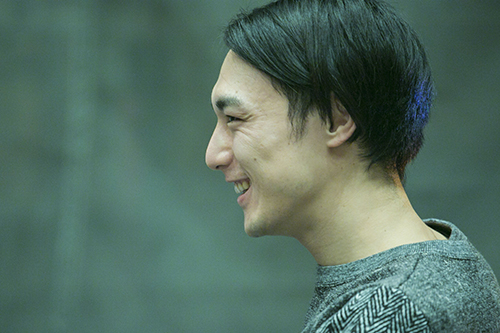
- The Art Complex is a "place of experimentation," says Satoshi Ichiyanagi, artistic director of the Kanagawa Prefectural Hall, and I think the organizers have high expectations for it. In that sense, I would like you to talk a little more about the meaning of your joint performance this time, in the context of the "Art Complex" series.
Yagi: Iwabuchi and I were born in 1980, and Hasunuma was born in 1982, so we're from the same generation, and I think that by working with people of that generation, we can communicate without having to use too much language. As for our production styles, I was in Kyoto, Iwabuchi was in Kanto, and Hasunuma was in New York, so this opportunity will be very interesting in the sense that it will connect the three locations, and although we each work in different genres, the fact that all three of us are not centered in our genres but rather go beyond them and engage in crossover activities will make for an interesting collaboration.
- What about you, Iwabuchi? What about your expression in a gallery space and your collaboration with Yagi and Hasunuma?
Iwabuchi: I don't really feel like we're calling it a "collaboration!" when we say we're working together on Art Complex 2014. Rather than looking forward to creating a framework, it feels like we're naturally coming together because we're interested in each other's expressions, and I think that this will have a very positive impact not only on this project, but on our future activities as well. It feels really comfortable, like we're gathering for something we need to do now, and it feels really inevitable.
- After all, the sense of distance between you all and the way you create something that is "open and ventilated" is itself an experiment, and a challenge to see how far you can take it before the performance. It's very encouraging to see how you've been steadily moving forward while various elements are emerging in a guerrilla-like way. I'm looking forward to seeing how it will change in future rehearsals.
Yagi: I think there is a possibility that things will change drastically. I'm really looking forward to it because I think that what we talk about in the rehearsal room will suddenly take shape.
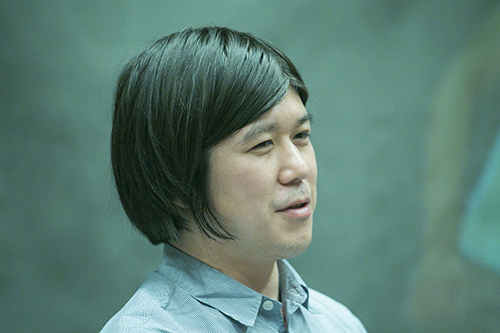
What you can only feel at a live performance
Iwabuchi: I'm going off topic a bit, but when it comes to art, music and performance, I think my stance is a little different from yours in the sense that ultimately, it wouldn't work without me. When making and exhibiting artworks or composing music, the artist may not be at the site where the work is exhibited or performed, and may deliver music to people who listen to CDs at home. In my case, on the other hand, it wouldn't work unless I'm at the site and the audience comes. In that sense, I'm really looking forward to the two of you being involved in the live performance this time. Although the pre-work can be done at each location, the fact is that you can't see this work, "Time Travel", unless you come to the Kanagawa Prefectural Hall Gallery on Tuesday, December 23rd (National Holiday).
- Moreover, this time there will only be one performance, so it will really only be a one-time experience.
Iwabuchi: If people who don't normally watch performing arts can experience the joy of going there and watching the performance from a different angle, then I think that would be a true art complex.
Yagi: I believe that there is something powerful about the body. For example, we live in an age where information can be sent as far as you want even if your body is only here, but that's why I feel that the value of watching a live performance is steadily increasing. In the days when the fastest way to move was by riding a horse, that value may have been the same, but as the amount of information continues to expand, the value of a live performance is also increasing in proportion to it. In that sense, I hope that many people will come to see it.
- I want people to actually experience it there and feel something for themselves. In addition to what you've just said, could you tell us the appealing points of this project and anything you'd like to say to the audience who will come to see it?
Yagi: Going back to what Iwabuchi said at the very beginning, in terms of subjective and objective time, one of the things I want to try this time is to see how much I can mess up measurable time, like the time of a video, with immeasurable subjective sense of time, like one's own body clock, so I hope that people who watch the performance will notice this difference.
Iwabuchi: I would also like to be able to express things like measurable time and subjective time being reversed, or being more scattered. How I can get to the point that Yagi just mentioned will depend on my future practice, so I would like to pursue this until the performance. I think it would definitely be interesting if something like that were to happen.
- Finally, to add a word about the future course of Art Complex 2014 "Time Travel", there will be a public rehearsal in the middle of the rehearsals, and we hope to have some communication with the audience there, followed by the main performance, and then an after-talk with Kei Hirakura, who specializes in art theory, is planned for Saturday, December 27th. In fact, I would like to conclude our discussion by adding that the whole process, including the rehearsal, public rehearsal, performance, and after-talk, is Art Complex 2014, and "Time Travel". Thank you very much.
